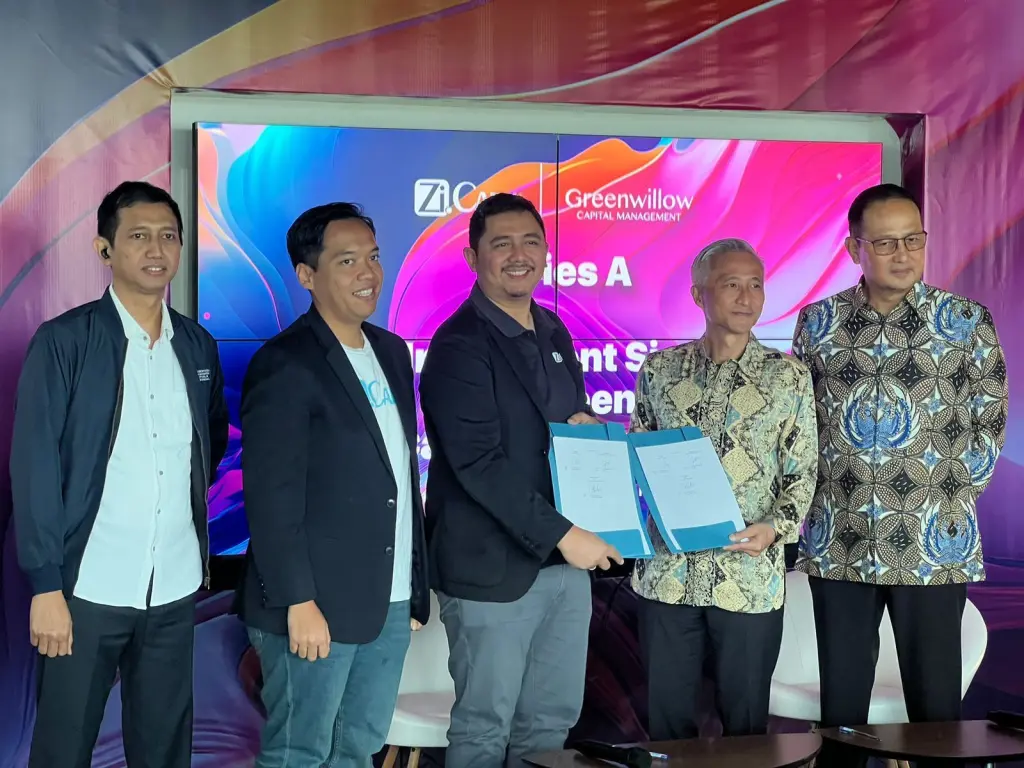 It is my humble aim of publishing this post to provide potential readers among the Health Information Management (HIM) / Medical Records Management (MRM) practitioner community in Malaysia who may come visit this website-blog, as a one-stop centre of information to locate all the various forms and their intended uses of the Malaysian civil registration system. It is also especially so to educate and inform them about the pitfalls of their mortality coding practices using the International Classification of Diseases Tenth Revision (ICD-10) in Malaysia.
It is my humble aim of publishing this post to provide potential readers among the Health Information Management (HIM) / Medical Records Management (MRM) practitioner community in Malaysia who may come visit this website-blog, as a one-stop centre of information to locate all the various forms and their intended uses of the Malaysian civil registration system. It is also especially so to educate and inform them about the pitfalls of their mortality coding practices using the International Classification of Diseases Tenth Revision (ICD-10) in Malaysia.
I am presenting this post also partly because of a Summit on Mortality Statistics during the 18th International Federation of Health Information Management Associations (IFHIMA) International Congress, taking place from October 12 to October 14, 2016 in Tokyo, Japan. During this planned summit, invited participants from developing countries are due to present their current conditions on mortality statistics collection and coding, discuss ways to improve mortality coding especially in developing countries, and the need for accuracy in this area.
But before I get into the details of worries on mortality coding procedures in Malaysia, I shall present some background knowledge on what a civil registration system is all about.
Many people in any country are born and die each year.
Any such country needs to know and count all births and deaths. A system must be in place in a country to count as well as track all births and deaths. This is usually done through a civil registration system, which continuously counts and tracks births by age and sex, which also counts and tracks all deaths by age, sex and not forgetting the more important reason that is of accounting for the main causes of their deaths, as well as the registration of marital status of its people. A well-functioning civil registration system of a country is then the most reliable source of statistics on births and deaths, and causes of death in a country and the marital status of individuals in its population.
A country cannot afford to only have approximate ideas of the numbers, the longevity and the health of their population. In countries with no civil registration system, births and deaths go uncounted and the causes of death are also not documented. Their governments cannot then effectively design public health policies or measure the impact of births and deaths on its population.
So why have a civil registration system in the first instance?
Civil registration brings multiple benefits. Benefits of a civil registration system include:
- an individual’s right to be counted at both extremes of life, i.e. at birth and at death;
- provides the basis for individual legal identity for social inclusion;
- a birth certificate is needed as a basic legal document – consistent with the Convention on the Rights of the Child proclaimed by The Office of the United Nations High Commissioner for Human Rights (OHCHR) that states that every child should be registered immediately after birth, that gives identity to a child, and automatically bestows a number of rights such as the right to health care, nationality, schooling, passport, property ownership, voting, formal employment, or access to banking services;
- death registration and certification with a death certificate for the family of the deceased are often required prerequisites for burial, remarriage, the resolution of criminal cases, ensures their right to inherit property, to access business and financial entitlements, and to claim any available insurance benefits; and
- for national planning, death registration helps identify a population’s most pressing health issues in order to have well-functioning health systems – (i) like what type of essential services to provide, (ii) the cause of death data from civil registration systems are vital for pinpointing the diseases and injuries that are cutting lives short and for planning preventive services to avoid premature mortality, and (iii) cause of death data that will be useful to inform governments about outbreaks of fatal disease, e.g. the recent Ebola outbreak.
The availability up-to-date and continuous vital statistics from a reliable and solid civil registration system depends on the level of development of the civil registration system. Lack of such a system and without such data, policy-makers of governments lack reliable evidence to design policies and tend to (OHCHR 2016) “fly blind, often making policy on the basis of ideology, anecdotes or for political considerations, rather than on evidence”.
What then is the situation in Malaysia to have a civil registration system?
Malaysia has a well-functioning civil registration system because it has the necessary law – Act 152 Registration Of Births And Deaths (Special Provisions) Act 1975 Incorporating all amendments up to 1 January 2006 to make it obligatory to register births and deaths, and the infrastructure – a National Registration Department (NRD) that has branches in all capital cities of each District and in all capital cities of all States in Malaysia, unlike in some countries, where it is likely that only people who live in cities have access to registration services. The NRD is known nationally known as “Jabatan Pendaftaran Negara (JPN)”, is the Malay [Bahasa Malaysia] translation for this department’s official name.
For private hospitals settings in Malaysia, Act 586 Private Healthcare Facilities And Services Act 1998 Incorporating all amendments up to 1 May 2006, Regulation 107 (2) (v) stipulates that a private healthcare facility or service are “to require notification be given of any births or deaths occurring in a private healthcare facility or service”.
The Malaysian NRD website (this link opens in a new tab of your current window) is an excellent website that provides its readers how-to-guides to register births and deaths under the Malaysian civil registration system.
As most births and deaths occur in public and private hospitals in Malaysia, this website however does not provide HIM / MRM practitioners in their respective place of work in Malaysia enough information on the purpose and workflows of the various forms for births and deaths that are used in a public or a private hospital.
The following are the various forms issued by the NRD, with the Bahasa Malaysia title given inside square brackets. Each link for the forms and exhibits listed below will open in a new tab of your current browser:
Forms used for birth registration
- Birth / Stillbirth Registration [Daftar Kelahiran / Kelahiran Mati] JPN.LM01
- Birth Certificate [Sijil Kelahiran] JPN.LM05; (no sample available; the reader can view the exhibit of a completed form below)
Forms used for death registration
- Death Registration [Dafter Kematian] JPN.LM02 – previous version
- Death Registration [Dafter Kematian] JPN.LM02 (Pin. 1/11) – current version
This is the current form for death registration. It is a combination form of death registration and burial permit. The burial permit incorporated in this form replaces the burial permit form (Am 138-Pin. 178) used since 1978, and now discontinued since form JPN.LM02 (Pin. 1/11) was first implemented for Peninsular Malaysia from 1st December 2011.
- Burial Permit [Permit Menguburkan] (Am 138-Pin. 178) – discontinued, and used since 1978
- Death Certificate [Sijil Kematian] JPN.LM03; (no sample available; the reader can view the exhibit of a completed form below)
- Certification of Causes of Death by Medical Officer [Perakuan Pegawai Perubatan Mengenai Sebab-sebab Kematian] JPN.LM09
- Certification of Causes of Death by Medical Officer (Post-Mortem) [Perakuan Pegawai Perubatan Mengenai Sebab-sebab Kematian (Post-Mortem)] JPN.LM10
The following are exhibits of completed forms, found on the Internet:
- Exhibit 1 Birth Certificate [Sijil Kelahiran] JPN.LM05
- Exhibit 2 Death Certificate [Sijil Kematian] JPN.LM03
- Burial Permit [Permit Menguburkan] (Am 138-Pin. 178)
The reader can browse the NRD website for details among others on (i) normal registration of birth registration that must be made within 14 days of the birth of a child in Malaysia, (ii) persons who can apply for registration of a child, (iii) the application procedure, (iv) required documents for registration, (v) payment, (vi) the methods of applying for extracts of births and/or death certificates to obtain a copy of the birth register by paying a prescribed fee and the various forms used, and (vii) late registration.
One main contention is the documentation of the cause of death and the identification process for the underlying cause of death in the death certificate. This is the missing link and misinformation to accurate mortality coding in Malaysia.
According to the ICD-10, Volume 2 Instruction Manual, accurate collection of mortality statistics and their ICD-10 coding are deemed as necessary to break the chain of events or to effect a cure at some point in preventable deaths in a country as the most effective public health objective to prevent the precipitating cause from operating.
HIM / MRM practitioners in Malaysia using ICD-10 for coding of disease are however, generally aware of guidelines included in the ICD-10, Volume 2 Instruction Manual to select the cause of death for tabulation and notification to the World Health Organisation (WHO) for international comparison of mortality statistics.
The causes of death to be entered on the medical death certificate of cause of death is defined (ICD-10, Vol 2 p.31) as “all those diseases, morbid conditions or injuries which either resulted in or contributed to death and the circumstances of the accident or violence which produced any such injuries”. The purpose of the definition (ICD-10, Vol 2 p.31) “is to ensure that all the relevant information is recorded and that the certifier does not select some conditions for entry and reject others. The definition does not include symptoms and modes of dying, such as heart failure or respiratory failure.”
When only one cause of death is recorded in the medical death certificate, this cause is usually selected for tabulation.
But sometimes more than one cause of death is recorded. The selection should be made in accordance with specific rules given in the ICD-10 Volume mentioned above. The rules are based on the concept of the underlying cause of death.
The underlying cause of death is defined (ICD-10, Vol 2 p.31) as “(a) the disease or injury which initiated the train of morbid events leading directly to death, or (b) the circumstances of the accident or violence which produced the fatal injury”.
It is not the HIM / MRM practitioner who identifies the cause of death or the underlying cause of death, rather it is the medical practitioner signing the death certificate who is responsible (ICD-10, Vol 2 p.32) to indicate which morbid conditions that led directly to death and to state any antecedent conditions giving rise to this cause.
The WHO recommends (ICD-10, Vol 2 p.32) that the medical practitioner signing the death certificate use The International Form Of Medical Certificate Of Cause Of Death (IFMCCD) which is designed to facilitate the selection of the underlying cause of death when two or more causes are recorded. I am aware that the IFMCCD is not implemented in Malaysia.
Thus, in the absence of the IFMCCD and general lack of its usefulness, a medical practitioner signing the death certificate in Malaysia is most likely is not aware of the guidelines to facilitate the selection of the underlying cause of death when two or more causes are recorded using the IFMCC. A medical practitioner or other qualified certifier in Malaysia then uses his or her clinical judgement in completing the death certificate form JPN.LM09 (for all deaths excluding for post-mortem) or JPN.LM10 (only used for post-mortem), and states the “cause of death” in the allocated space on these two forms.
Apparently, medical practitioners also state the same cause of death in the discharge summary and the Inpatient Face Sheet (Admission Form) for an inpatient.
HIM / MRM practitioners in their respective place of work in Malaysia are mostly unaware of the process how and when the cause of death is reported and stated by the medical practitioner in the forms JPN.LM09 and JPN.LM10.
HIM / MRM practitioners also vary in their understanding and practice on how mortality coding using ICD-10 is to applied to a reported cause of death. Some say mortality coding is assigned from the diagnostic statement in the discharge summary and while others claim to use the diagnostic statement found in the Inpatient Face Sheet (Admission Form).
In my opinion and to conclude the first part of this subject on mortality disease coding, the absence of a procedure or procedures to identify the underlying cause of death when more than one cause of death is recorded by a medical practitioner using IFMCCD, and the job of the HIM / MRM ICD-10 coder to assign ICD10 codes to a death, is highly inaccurate and not desirable in current day mortality disease coding practices using ICD-10 in Malaysia.
In a follow through article, I will prescribe some suggestions which could be instituted in Malaysia’s public and private hospitals, particularly in the ICD-10 disease coding for mortality
References:
- Act 152 Registration Of Births And Deaths (Special Provisions) Act 1975 Incorporating all amendments up to 1 January 2006
- Act 586 Private Healthcare Facilities And Services Act 1998 Incorporating all amendments up to 1 May 2006
- International Federation of Health Information Management Associations, 2016. Scholarship Program for Developing Countries [online] Available at http://www.ifhima2016.com/scholarship.html [Acessed 1 May 2016]
- The Office of the United Nations High Commissioner for Human Rights (OHCHR), 2016. Convention on the Rights of the Child [online] Available at http://www.ohchr.org/en/professionalinterest/pages/crc.aspx [Acessed 1 May 2016]
- World Health Organization 2011, Volume 2 Instruction Manual, International Statistical Classification of Diseases and Related Health Problems 10th Revision, 2010 edn, Geneva, Switzerland
Like this:
Like Loading...
 International leaders and renowned speakers from the Health Information Management (HIM) sector will present the most recent advances in HIM to HIM professionals from around the globe when they congregate to learn, to exchange experiences and to develop enduring friendships when the International Federation of Health Information Management (IFHIMA) holds its flagship event – its 18th international conference in Tokyo Japan, from October 12 to October 14, 2016.
International leaders and renowned speakers from the Health Information Management (HIM) sector will present the most recent advances in HIM to HIM professionals from around the globe when they congregate to learn, to exchange experiences and to develop enduring friendships when the International Federation of Health Information Management (IFHIMA) holds its flagship event – its 18th international conference in Tokyo Japan, from October 12 to October 14, 2016.
























 It is my humble aim of publishing this post to provide potential readers among the Health Information Management (HIM) / Medical Records Management (MRM) practitioner community in Malaysia who may come visit this website-blog, as a one-stop centre of information to locate all the various forms and their intended uses of the Malaysian civil registration system. It is also especially so to educate and inform them about the pitfalls of their mortality coding practices using the International Classification of Diseases Tenth Revision (ICD-10) in Malaysia.
It is my humble aim of publishing this post to provide potential readers among the Health Information Management (HIM) / Medical Records Management (MRM) practitioner community in Malaysia who may come visit this website-blog, as a one-stop centre of information to locate all the various forms and their intended uses of the Malaysian civil registration system. It is also especially so to educate and inform them about the pitfalls of their mortality coding practices using the International Classification of Diseases Tenth Revision (ICD-10) in Malaysia.



